Figures & data
Figure 1. Trend of mean air temperature (Tmean), minimum air temperature (Tmin), maximum air temperature (Tmax) and rainfall during the study period (May–October).
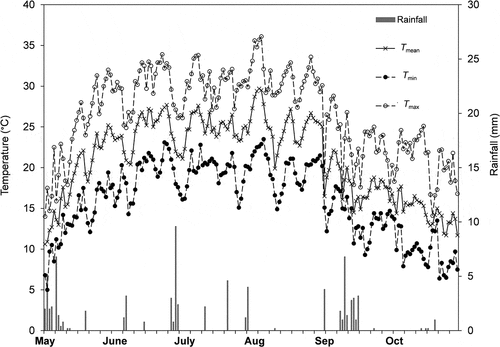
Table 1. List of the analyzed leaf traits at morphological, anatomical, and physiological level in Ailanthus altissima and Robinia pseudoacacia.
Table 2. Soil characterization in sun and shade conditions. SWC – soil water content; N – total soil nitrogen content; C/N – ratio between carbon and nitrogen content; SOM – soil organic matter content. Mean values (± SE) are shown (n = 3).
Table 3. Morphological and anatomical leaf traits of sun and shade conditions in Ailanthus altissima and Robinia pseudoacacia. CETad – adaxial cuticle and epidermis thickness; CETab – abaxial cuticle and epidermis thickness. Mean values (± SE) are shown (n = 50). Different letters indicate significant differences between sun and shade conditions within each species (T-test, p < 0.05).
Figure 2. Regression analysis between specific leaf area (SLA) and total leaf thickness (LT). Regression equation, determination coefficient (R2) and significance level (p) are shown. (∆ = Ailanthus altissima shade condition; ◊ = Robinia pseudoacacia shade condition; ▲ = Ailanthus altissima sun condition; ♦ = Robinia pseudoacacia sun condition). The perpendicular, broken line separates the values of shade leaves (upper left part) and sun leaves (lower right part).
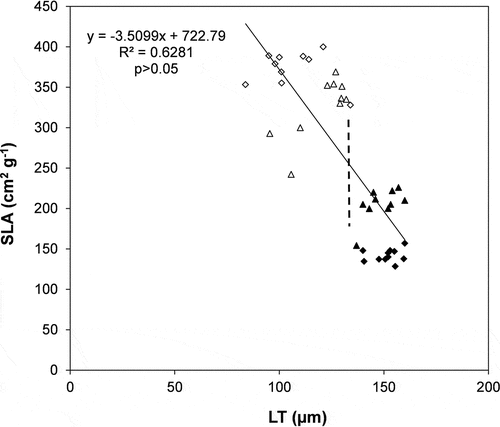
Figure 3. Trend of (a) net photosynthetic rates (PN), (b) leaf dark respiration (RD) during the study period in sun and shade conditions for Ailanthus altissima and Robinia pseudoacacia. Each point is the mean (±S.E.) of 15 leaves in three sampling days per month. Different letters indicates significant differences (ANOVA, p ≤ 0.05) during the study period.
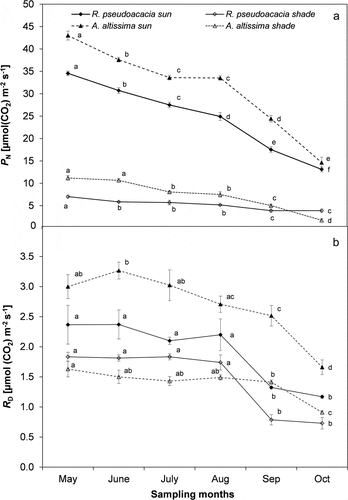
Figure 4. Regression analysis between net photosynthetic rates (PN) and relative chlorophyll content (RCc). Regression equation, determination coefficient (R2) and significance level (p) are shown.
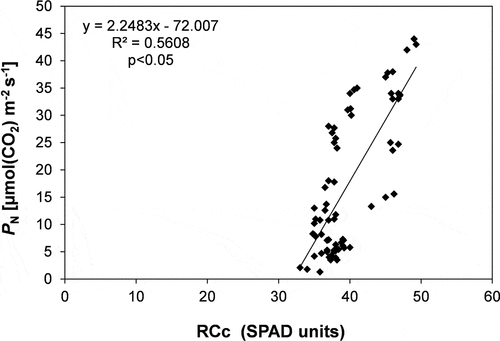
Figure 5. Trend of A) maximum PSII photochemical efficiency (FV/FM) B) quantum yield of photosynthesis of light-adapted leaves (ɸPSII) during the study period in sun and shade conditions for Ailanthus altissima and Robinia pseudoacacia. Each point is the mean (±S.E.) of 15 leaves in three sampling days per month. Different letters indicates significant differences (ANOVA, p ≤ 0.05) during the study period.
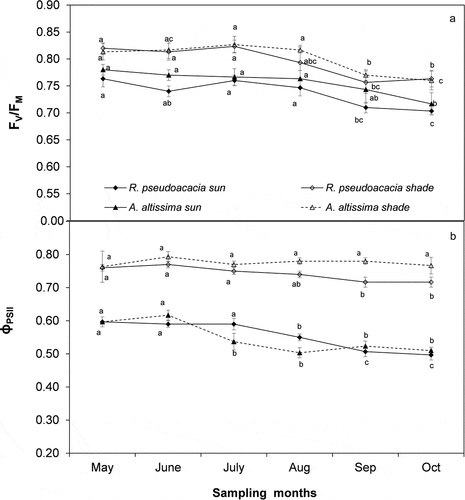
Table 4. Plasticity index for the anatomical, morphological, and physiological leaf traits of Ailanthus altissima and Robinia pseudoacacia. The anatomical (PIa), morphological (PIm), physiological (PIp) plasticity index, are shown. PP – palisade parenchyma thickness; SP – spongy parenchyma thickness; CETad – adaxial cuticle and epidermis thickness; CETab – abaxial cuticle and epidermis thickness; LT – total leaf thickness; LA – leaf area; DM – dry mass; SLA – specific leaf area; E – transpiration rate; gs – stomatal conductance; PN – net photosynthetic rate; RD – respiration rate; RD/PN – ratio between RD and PN; RCc – relative chlorophyll content; FV/FM – maximal quantum yield of PSII photochemistry; ΦPSII – effective quantum yield of PSII photochemistry; ETR – electron transport rate. Bold font indicates leaf traits that significantly differed (p < 0.05) between sun and shade conditions within each species.
